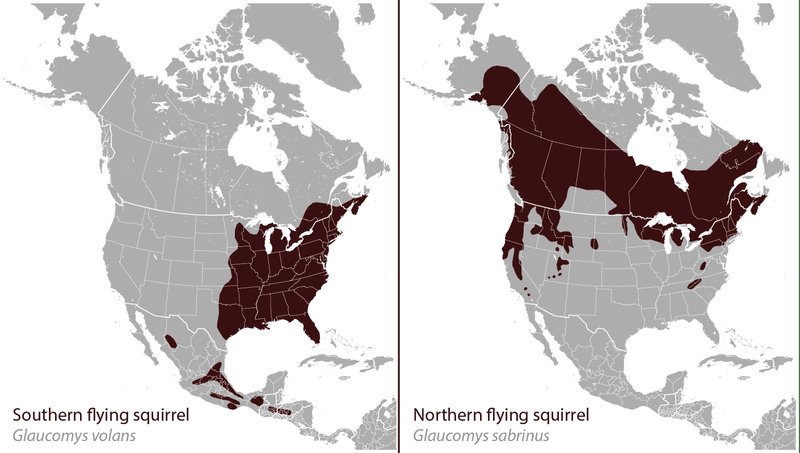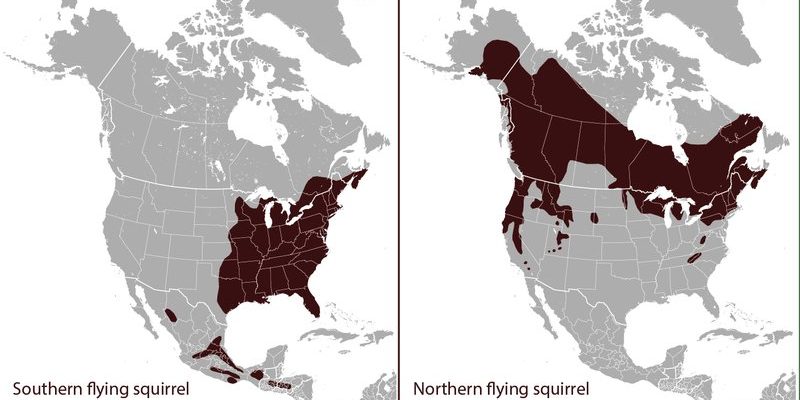
Flying squirrels belong to the family Sciuridae, and there are several species scattered across different regions. They primarily thrive in forested areas, but their specific living conditions vary depending on the species. The heart of their habitat lies in understanding the types of environments they prefer and how they adapt to their surroundings. So, grab a cup of coffee, and let’s explore where flying squirrels live!
What Are Flying Squirrels?
Before we jump into their habitats, let me explain what makes flying squirrels so interesting. These little guys, which include the Northern Flying Squirrel and the Southern Flying Squirrel, are nocturnal creatures, meaning they’re active during the night. They have large, expressive eyes that help them see in the dark, and their soft, thick fur keeps them warm during chilly nights.
Interestingly, flying squirrels are sociable animals. They often nest in groups, which can be quite a sight—imagine a cozy little family of squirrels cuddled together in a hollow tree trunk! Their social nature helps them communicate and find food sources easily.
Geographical Distribution of Flying Squirrels
Flying squirrels are found throughout North America, and their range extends into parts of Central America and even Asia. Here’s a quick overview of where you can find them:
- North America: The Northern Flying Squirrel is primarily located in the northern regions, from Canada down to the northeastern United States.
- Eastern United States: The Southern Flying Squirrel is common in the eastern states, from Maine all the way to Florida.
- Western United States: You’ll find the Pacific Flying Squirrel, mainly in the Pacific Northwest.
- Tropical Areas: Some species reside in tropical rainforests in South America and parts of Asia.
These squirrels choose habitats that are rich in trees, particularly hardwoods, where they can easily glide and forage for food. The combination of dense foliage and a good variety of tree species is essential for their survival.
Preferred Habitats: Forests and Woodlands
Now, let’s talk about the habitats that flying squirrels prefer. They thrive in different types of forests, but some are more suitable than others. Here are the most common types of habitats:
- Deciduous Forests: These forests, where trees lose their leaves in the fall, are often home to Southern Flying Squirrels. They enjoy the diversity of tree species and the abundant food supply.
- Coniferous Forests: The Northern Flying Squirrel prefers coniferous forests, where spruce and fir trees dominate. These environments provide perfect nesting sites and plenty of food.
- Mixed Forests: A mix of both deciduous and coniferous trees can create an ideal habitat, offering the best of both worlds for these squirrels.
Honestly, flying squirrels are highly adaptable. They can thrive in urban areas as long as there’s sufficient greenery and trees around, which makes them quite versatile.
Tree Preferences and Nesting Habits
Flying squirrels are tree-dwellers at heart. Their habitat preferences are closely linked to the types of trees they rely on for nesting and food. They often choose trees with:
- Hollow Cavities: These provide a safe space for nesting. Flying squirrels will often take up residence in the abandoned nests of woodpeckers or natural tree hollows.
- Abundant Foliage: Trees that are rich in leaves help them hide from predators and provide ample food sources like nuts and fruits.
- Good Gliding Space: They need trees spaced out well enough to glide from one to another without hitting the ground too often.
You might be wondering how they build their nests. They create cozy homes using leaves, moss, and even fur, making it a warm haven for their young. During the day, they might curl up and sleep in these nests, waiting for nightfall and the chance to glide through their territory.
Seasonal Habitats and Behavior
Flying squirrels’ habitats can change with the seasons, as their behavior adapts to different weather conditions. During warmer months, they’re more active, foraging for food and expanding their territory.
However, when winter rolls around, they often retreat to their nests. Here’s how their seasonal behavior changes:
- Summer: They spend more time foraging and are often seen gliding between trees, gathering nuts and fruits to store for the colder months.
- Winter: During the winter, their activity slows down. They rely on the food caches they created earlier in the year and spend time huddled in their nests to conserve warmth.
It’s fascinating how these little creatures adjust their living habits based on the seasons. It’s like they have built-in survival strategies that keep them thriving no matter the weather.
Conservation and Habitat Protection
With changing climates and urban development, the habitats of flying squirrels are facing challenges. Deforestation and habitat fragmentation can threaten their living spaces. Conservation efforts are crucial to maintain healthy populations of these unique creatures.
Here are a few ways we can help protect their habitats:
- Reforestation: Planting trees can restore natural habitats that have been disrupted.
- Creating Wildlife Corridors: These pathways connect fragmented habitats, allowing flying squirrels to move safely and access essential resources.
- Educating the Public: Raising awareness about the importance of protecting these habitats helps garner support for conservation efforts.
By understanding where flying squirrels live and what they need, we can make a real difference in their survival.
Summary: Understanding the Home of Flying Squirrels
Flying squirrels are truly remarkable creatures that bring a unique charm to our forests. Their preferred habitats are rich with trees, offering them safety, food, and space to glide. With a geographical distribution that spans various regions, they thrive in different types of forests, adapting their nesting habits to suit their environments.
Ultimately, by taking steps to protect their habitats, we can ensure future generations get to enjoy the sight of these adorable gliders flitting through the treetops. So, next time you’re wandering in the woods or even your backyard, keep an eye out—who knows, you might just spot a flying squirrel soaring through the night sky!

